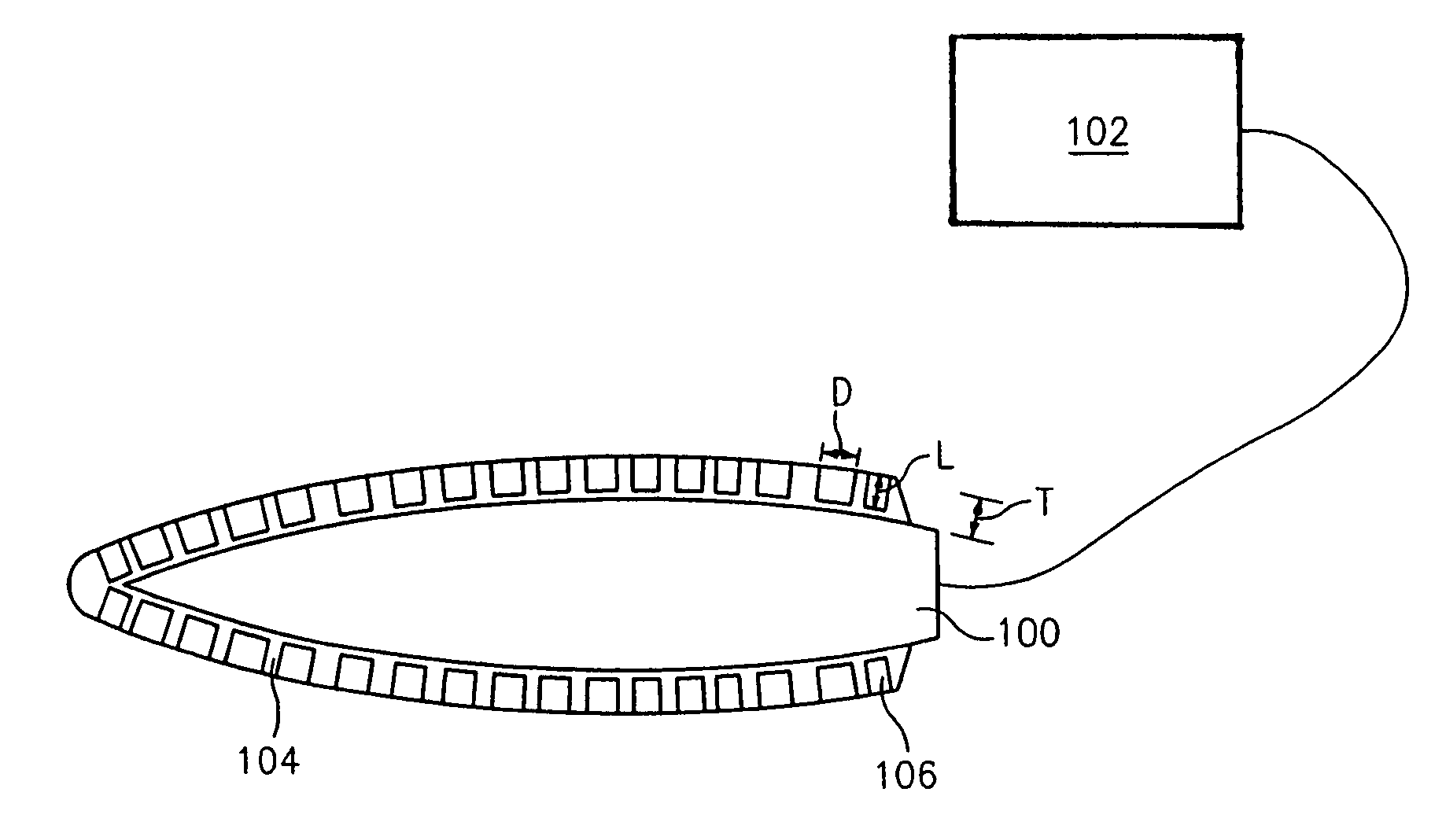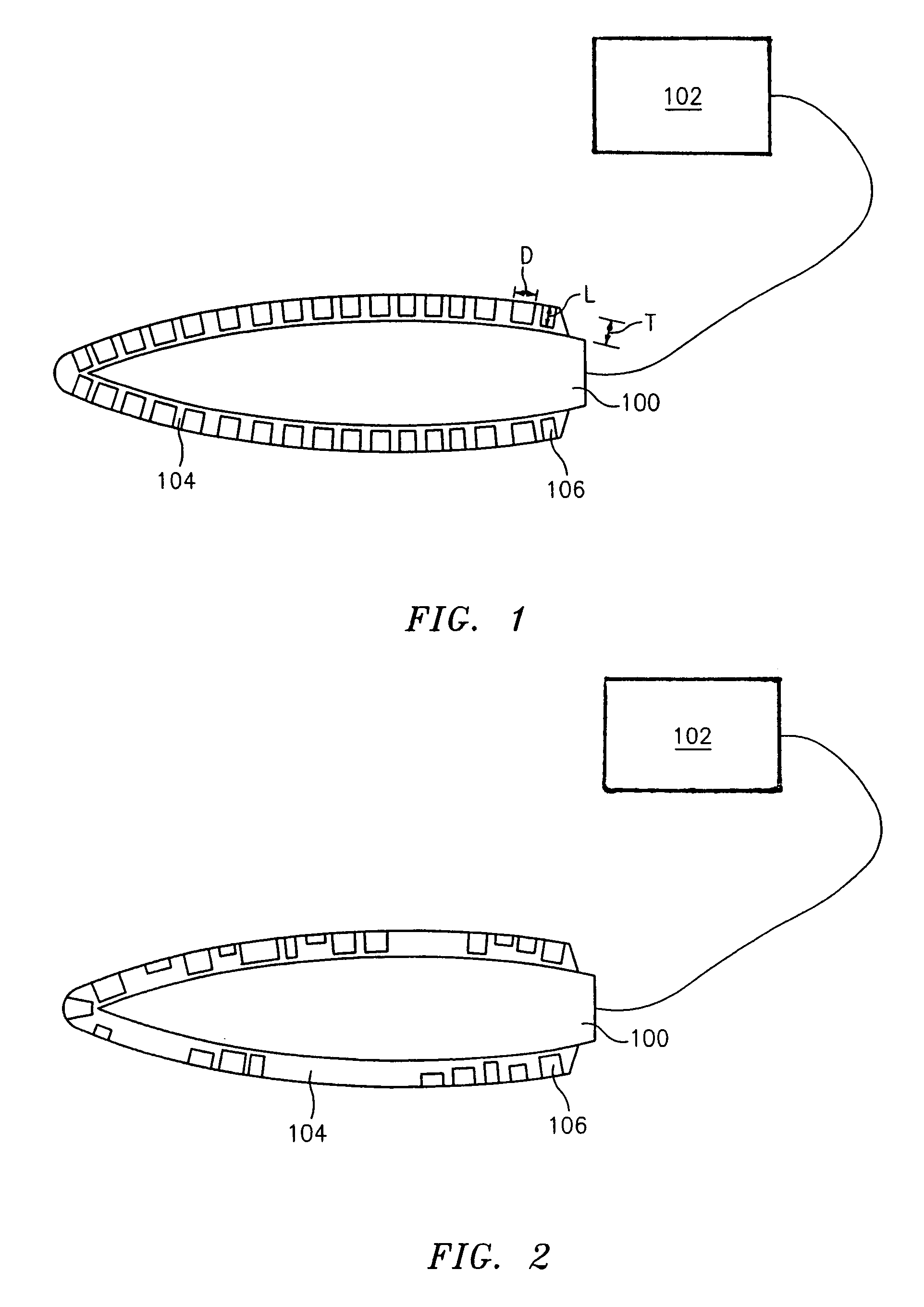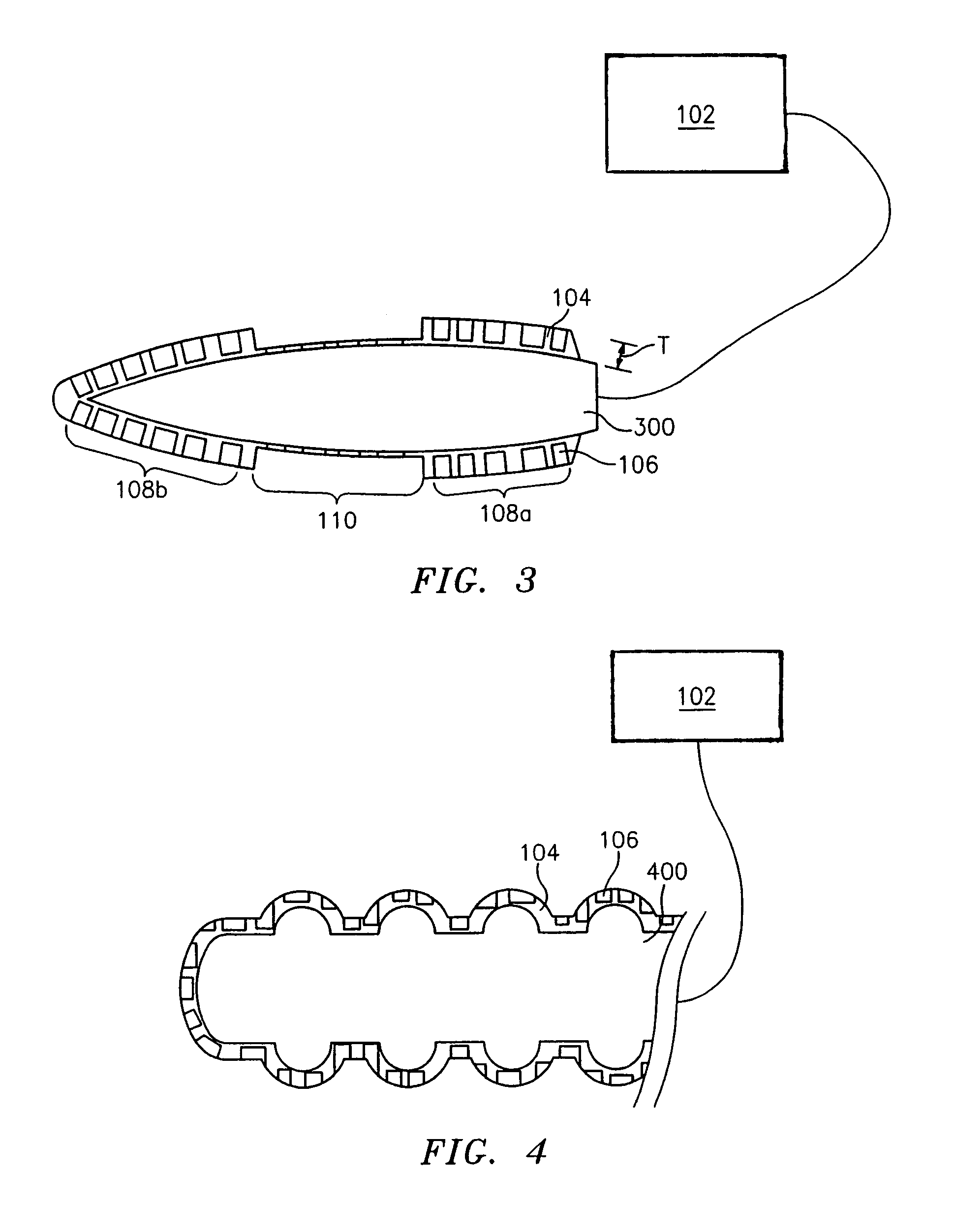Electrosurgical electrode having a non-conductive porous ceramic coating
a porous ceramic, electrode technology, applied in the field of electrosurgical electrodes, can solve the problems of difficult prediction and control of the depth of ablation, and the inability of known electrodes to control or limit the current per arc, so as to improve the arc distribution across the tissue, the effect of improving the arc distribution
- Summary
- Abstract
- Description
- Claims
- Application Information
AI Technical Summary
Benefits of technology
Problems solved by technology
Method used
Image
Examples
Embodiment Construction
[0027]Reference should be made to the drawings where like reference numerals refer to similar elements. Referring to FIG. 1, there is shown an enlarged, cross-sectional view of one embodiment of a conductive electrode according to the present disclosure. The electrode is designated generally by reference numeral 100 and it is connected to an electrosurgical generator system 102. The electrode 100 is coated with a non-conductive, porous ceramic coating 104 which “pinches” or splits the arc current generated by the electrosurgical generator system 102 into a small diameter channel, effectively keeping the same current and voltage, but creating several small arcs from one large arc.
[0028]This has the effect of separating the arc current, effectively increasing the current effect to the tissue, resulting in a finer cut or other surgical effect. That is, the non-conductive, porous ceramic coating 104 enables a low frequency current to achieve surgical results indicative of a high frequen...
PUM
| Property | Measurement | Unit |
|---|---|---|
| diameter | aaaaa | aaaaa |
| frequency | aaaaa | aaaaa |
| length | aaaaa | aaaaa |
Abstract
Description
Claims
Application Information
 Login to View More
Login to View More - R&D
- Intellectual Property
- Life Sciences
- Materials
- Tech Scout
- Unparalleled Data Quality
- Higher Quality Content
- 60% Fewer Hallucinations
Browse by: Latest US Patents, China's latest patents, Technical Efficacy Thesaurus, Application Domain, Technology Topic, Popular Technical Reports.
© 2025 PatSnap. All rights reserved.Legal|Privacy policy|Modern Slavery Act Transparency Statement|Sitemap|About US| Contact US: help@patsnap.com



